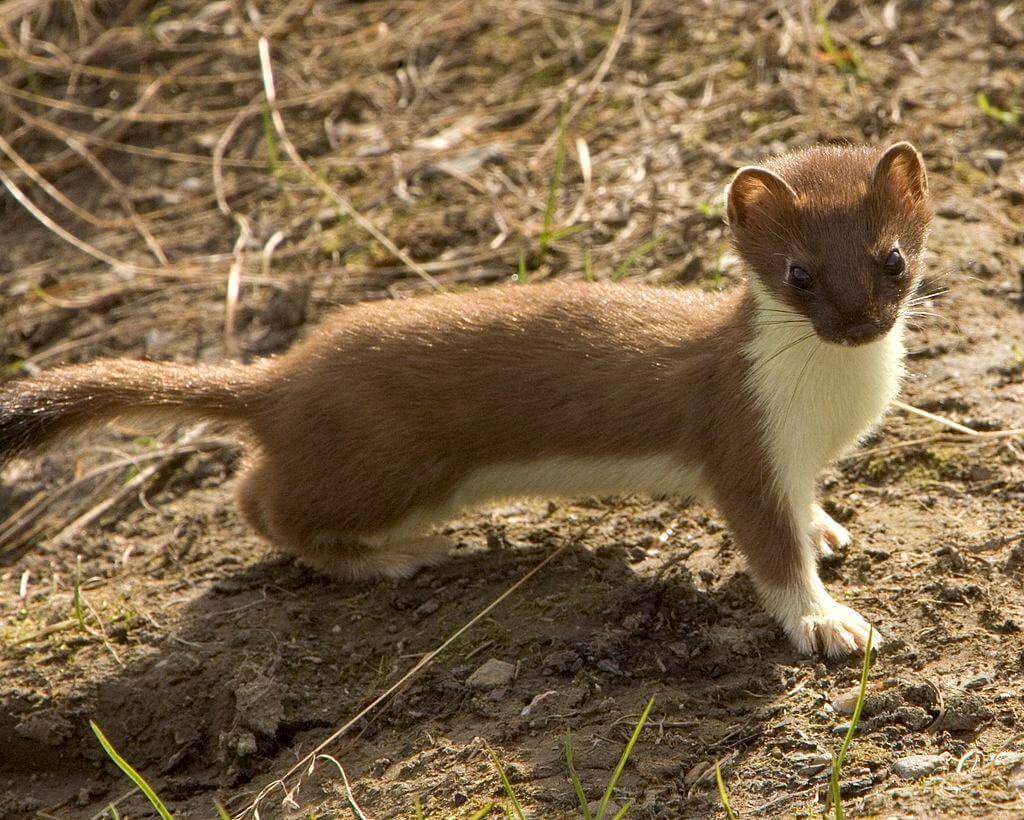The Short-Tailed Weasel: Life Sped Up
By Carol Alette
Broadcast 2.8.2015 and 12.17 & 12.20.2019

Short-tailed weasel (Mustela erminea), summer phase. Photo by Steve Hillebrand, USFWS.
Listen:
While some animals get off comparatively easily in the winter by hibernating, or by gorging and then fasting, the short-tailed weasel has to hunt every day to keep its blast-furnace metabolism stoked. With a heart rate of several hundred beats a minute and little in the way of fat reserves on its long and slender body, the animal must consume half its body weight daily.
Nature has, however, given the weasel a few tricks for surviving the winter. The most obvious one is camouflage. As the snow falls, the short-tailed weasel trades in its brown and tan coat for a solid white one. Well, almost solid white; it retains a black tip on the end of its tail, which some researchers believe serves to distract predators from the animal’s body.
The same metabolism that keeps the weasel in an almost-constant state of hunger also makes it a quick, effective hunter. Aided by its keen sense of smell, the short-tailed weasel is capable of climbing trees, swimming rivers, diving into small rodent holes in the ground and hunting by day or by night in its search for prey. Its tastes are versatile, ranging from earthworms to waterfowl, although mice are its most common prey. In days of plenty, the energetic short-tailed weasel may kill more than it needs, and stockpile the carcasses for leaner days ahead.
Perhaps the most interesting adaptation of the short-tailed weasel is its reproductive strategy. With only a year and a half to live, the weasel doesn’t fool around when it comes to reproducing. Females become fertile at the tender age of six weeks and mate while still in the nest, sometimes even before their eyes are open. Adult females breed while still nursing their young. And in a clever and unusual twist, the fertilized eggs that result from the summer’s mating lie dormant inside the female for ten months; the eggs start growing again in the spring so that young are born in April or May, when there’s plenty of prey around with which to satisfy their voracious appetites.
Every week since 1991, Field Notes has inquired about Montana’s natural history. Field Notes are written by naturalists, students, and listeners about the puzzle-tree bark, eagle talons, woolly aphids, and giant puffballs of Western, Central and Southwestern Montana and aired weekly on Montana Public Radio.
Click here to read and listen to more Field Notes. Field Notes is available as a podcast! Subscribe on iTunes, Google Play, or wherever you listen to podcasts.
Interested in writing a Field Note? Contact Allison De Jong, Field Notes editor, at adejong [at] montananaturalist [dot] org or 406.327.0405.
Want to learn more about our programs as well as fun natural history facts and seasonal phenology? Sign up for our e-newsletter! You can also become a member and get discounts on our programs as well as free reciprocal admission to 300+ science centers in North America!












